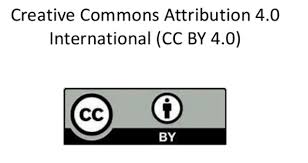Changes in the viability of free and microencapsulated Lactobacillus rhamnosus during storage of ice milk fortified with sweet cherry
DOI:
https://doi.org/10.47440/JAFE.2021.2103Keywords:
Ice milk, cherry fruit, probiotic viability, L. rhamnosus, polyphenols, and antioxidantAbstract
Four ice milk samples were produced, one of them served as control (C, no added sweet cherry pulp (SCP), and containing free cells of L. rhamnosus) and the other three treatments containing 30 % SCP and free cells (T1), encapsulated cells using sodium alginate-skim milk (T2), or encapsulated cells using sodium alginate-denaturated whey protein (T3). The fresh ice milks were subjected to sensory evaluation, physicochemical properties (overrun, and meltdown tests) while the changes in pH, L. rhamnosus viability, total phenolic content (TPC), and antioxidant activity (AOA) have been monitored at 1, 15, and 30 days of frozen storage. SCP had higher TSS (17.5%), total sugar (13.24%), higher TPC (112 mg GAE/100g), and AOA (84.16%) while it had a lower pH value (4.14). Unlike the effect of having probiotic bacteria, adding SCP increased overrun, and decreased pH and melting rate of ice milks. Also, pH decreased over time, and the lowest value was observed for T3. L. rhamnosus was strongly protected (had the highest survival rate of 95.94% for T3) using alginate-denaturated whey protein followed by alginate-skim milk (90.04% for T2). Adding SCP increased TPC and AOA of ice milks and their values were decreased during storage. Regarding sensory properties, all samples were acceptable. It could be concluded that encapsulation using sodium alginate blended with skim milk or denaturated whey protein improved the viability of L. rhamnosus in ice milk.






 Publisher:
Publisher: 